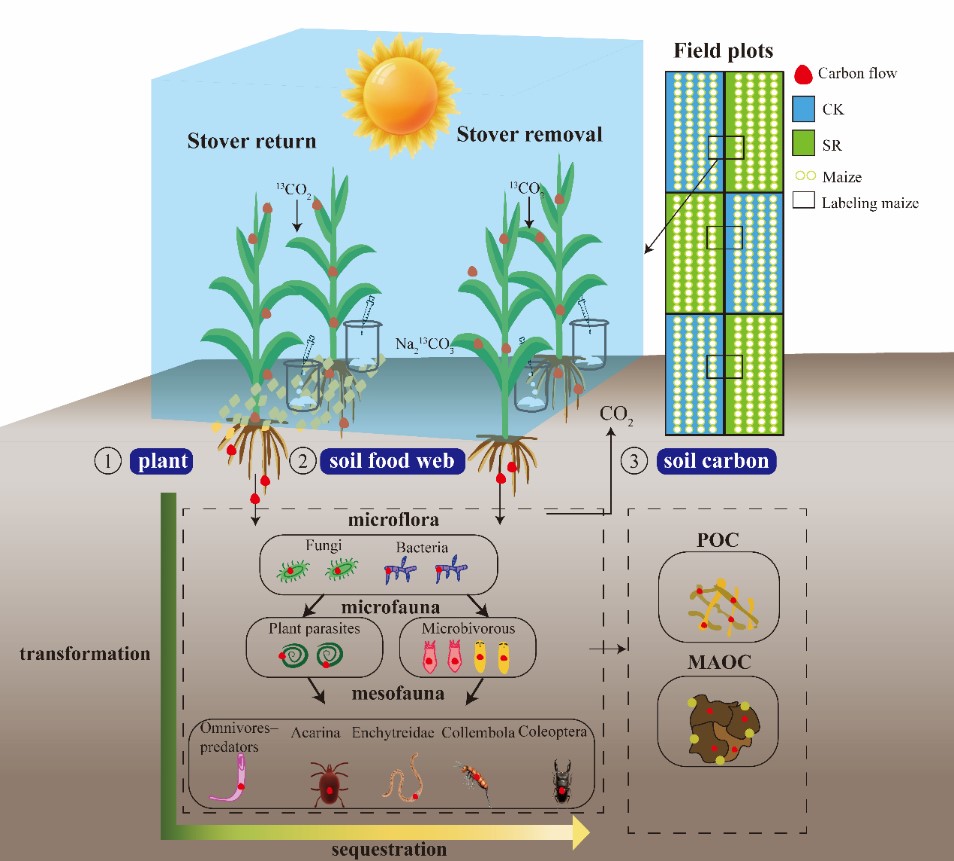
Researchers from the Institute of Applied Ecology (IAE) of the Chinese Academy of Sciences (CAS) have uncovered how soil food webs promote the transformation and storage of photosynthetic carbon in farmlands.
Their results were published in the Journal of Cleaner Production.
Crop photosynthesis converts atmospheric carbon dioxide into organic matter, which later contributes to soil carbon sequestration. Returning crop residues, or stover, to the field is a common conservation tillage practice that restores soil nutrients and stimulates biological activity.
Through field trials and 13C isotope labeling experiments, Dr. ZHANG Xiaoke's research team traced how photosynthetically fixed carbon moves from crops into soil and throughout different components of the soil food web.
They found that stover return increased the content of particulate organic carbon (POC) and mineral-associated organic carbon (MAOC) by approximately 30.96% and 11.39%, respectively, compared with plots where stover was removed. Stover return also reshaped the structure of soil biotic communities, strengthening the trophic connections among soil microorganisms,microfauna, and macrofauna.
Further analysis revealed that soil microfauna, primarily nematodes, played a crucial role in the carbon turnover process, contributing approximately 60.52% to total soil carbon renewal. These small soil biota enhance interactions within the soil food web and facilitate the trade-off between active (POC) and stable (MAOC) forms of soil carbon.
Crop photosynthetic carbon turnover pathway revealed how photosynthetic carbon efficiently circulated through crops, soil, and the soil food web. The researchers found that bacterial decomposition processes facilitated the renewal of POC, while fungal decomposition processess supported the stable accumulation of MAOC. The synergy between crops, soil microbes, and soil fauna ensured that more carbon was accumulated in the soil.
The study clarified a chain of interactions described as "stover return → soil food web restructuring → enhanced carbon transformation → soil carbon sequestration." It also highlighted the essential role of microfauna in connecting aboveground plant processes with belowground carbon storage.

Conceptual diagram illustrating the flow, transformation, and retention of 13C-labeled carbon through the crop, soil, and soil food web system. (Image by ZHANG Xiaoke)

86-10-68597521 (day)
86-10-68597289 (night)

52 Sanlihe Rd., Xicheng District,
Beijing, China (100864)

